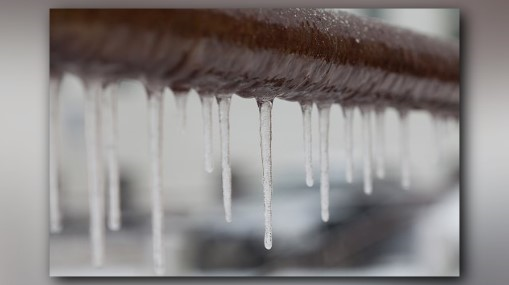Tips to Keep Your Pipes from Freezing Damage: Important Tips
Tips to Keep Your Pipes from Freezing Damage: Important Tips
Blog Article
We've found this article relating to Preventing and dealing with frozen pipes directly below on the net and concluded it made perfect sense to share it with you on this site.

Cold weather can damage your plumbing, particularly by freezing pipelines. Here's exactly how to stop it from happening and what to do if it does.
Introduction
As temperature levels decline, the threat of icy pipes rises, potentially resulting in expensive repair services and water damages. Recognizing exactly how to stop icy pipes is vital for home owners in cold environments.
Recognizing Frozen Pipes
What causes pipes to ice up?
Pipelines freeze when revealed to temperatures below 32 ° F (0 ° C) for expanded durations. As water inside the pipes freezes, it broadens, taxing the pipe walls and possibly triggering them to burst.
Threats and damages
Icy pipelines can result in water supply disturbances, building damage, and pricey repair services. Burst pipelines can flooding homes and trigger considerable structural damages.
Signs of Frozen Water Lines
Recognizing frozen pipelines early can prevent them from rupturing.
Just how to identify frozen pipelines
Seek decreased water flow from faucets, uncommon smells or noises from pipelines, and visible frost on subjected pipelines.
Avoidance Tips
Insulating prone pipelines
Cover pipelines in insulation sleeves or utilize warmth tape to shield them from freezing temperature levels. Concentrate on pipelines in unheated or outside areas of the home.
Home heating techniques
Maintain interior spaces properly warmed, specifically areas with plumbing. Open up cupboard doors to allow cozy air to circulate around pipelines under sinks.
Securing Outdoor Pipes
Garden tubes and outside faucets
Separate and drain yard hose pipes prior to winter months. Install frost-proof spigots or cover outdoor taps with protected caps.
What to Do If Your Pipes Freeze
Immediate activities to take
If you presume frozen pipes, keep faucets open up to alleviate stress as the ice thaws. Use a hairdryer or towels taken in hot water to thaw pipes slowly.
Long-Term Solutions
Structural changes
Consider rerouting pipelines away from outside wall surfaces or unheated areas. Include extra insulation to attics, cellars, and crawl spaces.
Updating insulation
Buy top notch insulation for pipelines, attic rooms, and wall surfaces. Appropriate insulation helps keep consistent temperature levels and reduces the danger of icy pipes.
Final thought
Stopping icy pipes calls for proactive measures and fast feedbacks. By comprehending the causes, indications, and preventive measures, home owners can shield their pipes during cold weather.
5 Ways to Prevent Frozen Pipes
Drain Outdoor Faucets and Disconnect Hoses
First, close the shut-off valve that controls the flow of water in the pipe to your outdoor faucet. Then, head outside to disconnect and drain your hose and open the outdoor faucet to allow the water to completely drain out of the line. Turn off the faucet when done. Finally, head back to the shut-off valve and drain the remaining water inside the pipe into a bucket or container. Additionally, if you have a home irrigation system, you should consider hiring an expert to clear the system of water each year.
Insulate Pipes
One of the best and most cost-effective methods for preventing frozen water pipes is to wrap your pipes with insulation. This is especially important for areas in your home that aren’t exposed to heat, such as an attic. We suggest using foam sleeves, which can typically be found at your local hardware store.
Keep Heat Running at 65
Your pipes are located inside your walls, and the temperature there is much colder than the rest of the house. To prevent your pipes from freezing, The Insurance Information Institute suggests that you keep your home heated to at least 65 degrees, even when traveling. You may want to invest in smart devices that can keep an eye on the temperature in your home while you’re away.
Leave Water Dripping
Moving water — even a small trickle — can prevent ice from forming inside your pipes. When freezing temps are imminent, start a drip of water from all faucets that serve exposed pipes. Leaving a few faucets running will also help relieve pressure inside the pipes and help prevent a rupture if the water inside freezes.
Open Cupboard Doors
Warm your kitchen and bathroom pipes by opening cupboards and vanities. You should also leave your interior doors ajar to help warm air circulate evenly throughout your home.

I was brought to that article about Winter Plumbing Precautions: Preventing Frozen Pipes through a buddy on a different site. Sharing is good. Helping others is fun. Thanks for taking the time to read it.
Click Here Report this page